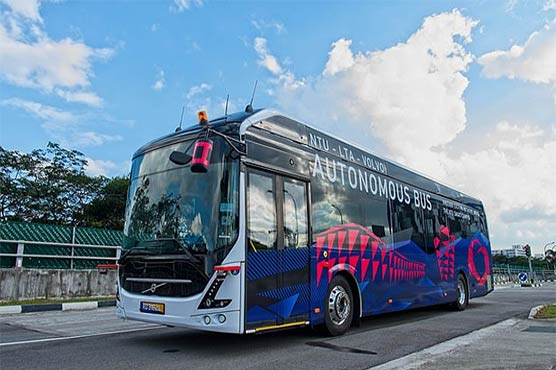Driverless buses delight tourists in new Singapore test

Chief Robotics Engineer said safety was paramount during this testing phase.
SINGAPORE (Reuters) - Under the sweltering Singapore sun, an autonomous shuttle bus drives up by itself and allows a line of tourists to board, providing respite from the heat as the passengers sped away in cool comfort.
The island-state - ranked second behind the United States in its preparedness for driverless vehicles - started to tentatively test a fleet of shuttles in its coastal tourist district of Sentosa this week.
After a series of mishaps at home and abroad with the new technology, the company behind the latest test said it is taking no chances. Tan Nai Kwan, chief robotics engineer at ST Engineering Land Systems, said safety was paramount during this testing phase.
"We always want to have a very safe ride for everybody. I think throughout the whole process, you have seen us, we are very concerned about safety belt, et cetera," said Tan.
On the first day of the trial on Monday (August 26), there were almost as many bus stewards as passengers making sure seatbelts were tightly fastened as the bus trundled through quiet roads. Meanwhile, a driver hovered above the self-rotating steering wheel at all times, ready to snatch back control.
"I have to look out for traffic, any hazards. Some drivers they violate the rules, which we need to take extra precautions, because they (don’t) know how this autonomous bus is working," said Muhd Faiz Bin Ahmad, one of the autonomous buses’ safety driver.
Singapore’s testing of the technology is being closely watched as tech firms and automakers race to build self-drive cars and develop new business plans for what is expected to be a long-term makeover of personal transport.
The city-state ranked No. 2 globally in an index that assesses countries’ openness and preparedness for autonomous vehicles in a recent KPMG report, although a broader roll out across the island remains years away.
Testing is not without risk. In 2016, a self-driving car being tested in Singapore collided with a truck as it was changing lanes. The were no injuries but similar accidents in the U.S. have been fatal.
But the few intrepid tourists that managed to navigate the on-demand service on the trial’s first day in Singapore did not seem phased by their robotic navigator.
"It’s pretty cool, but at the same time it feels similar to a normal bus," said Stephen Byrne, a 20-year old student from Ireland.


